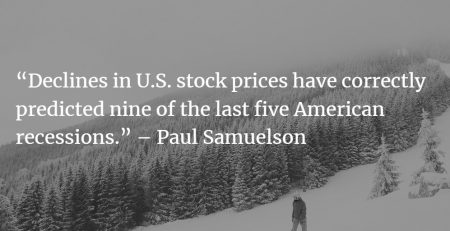Price Matters: Why a Great Company Can Be a Bad Investment
Here at Globescan, we are investors not traders- we research businesses in detail, understanding them inside and out, and only when we are comfortable with the economics and prospects of a business will we make an initial investment. We see this investment similarly to that of an owner or partner in the business over the long run, not as a short-term bet that we can turn around and trade for a slight premium.
That said, there are times when we find great businesses that we would love to be partners in, but unfortunately, those businesses aren’t available at a price that we can justify paying. After all, buying even a great business at the wrong price can lose us money.
This is where the art of valuation comes into play; we must establish what a business is worth (its intrinsic value), then compare this to its trading price (market sentiment). Value and price often diverge substantially, particularly during times of stress/ euphoria, providing buying and selling opportunities for well-prepared investors. Remember: the market gives us prices, but prices don’t tell us anything about actual value.
Think of our process for investment selection as two discrete questions:
- Is this a great business?
- Is it priced attractively?
If either of those two questions are answered with a ‘no’ then we are best seeking opportunities elsewhere. Please bear in mind that these two questions are subjective, there is no black and white, right and wrong answer for either. Both are open to interpretation and opinion. It is this blending of art and science that makes investing both a fascinating and inherently difficult proposition.
We often cover in detail the characteristics that contribute to us ascribing the title of ‘great’ to a business, so for the purposes of this article, let’s focus more on the valuation side of things and why it is that a great business could be a poor investment.
The Art of Valuation
It takes months of work to just answer the ‘is this a great business question’, and then many more hours of work on top of that to answer the ‘is it priced attractively’ question as well.
The best way to show this is through real life examples. Take Costco. In short, the genius of Costco is that it’s a retailer that doesn’t make any money retailing – after marking up products by no more than 15%, and paying for employee and warehouse costs, Costco comes out about break-even. But the catch is that to access Costco’s virtually guaranteed lowest prices, customers must pay $60 a year to be a “Costco member”.
Customers win in this model because they receive more than $60 a year in savings (even if all they do is use the gas station and never step foot in the store), and Costco wins because they have no incremental cost to provide a membership, so the entire fee falls directly to their bottom line.
The beauty of this membership model is that it frees Costco from needing to make money directly off the products it sells, which enables Costco to undercut the competition that don’t have that luxury. Low prices mean more members, which means more sales, which means more negotiating power over suppliers, which means even lower prices, in a virtuous cycle. Everything they do is designed to keep costs down and improve the customer experience through added verticals like gasoline and pharmacy, which in turn drives continued membership growth and retention. In other words, Costco has a self-reinforcing business model that gets better as it grows.
And their store growth and same store comps have remained resilient even in an increasingly Amazon world. Yet despite its enviable position, at the moment Costco doesn’t appear to be a great investment to us- because it is not priced attractively.
To buy Costco shares today we’d have to pay a multiple of 34x next year’s earnings, or an EV/ EBITDA multiple of 20x (we are using multiples as a shortcut here, please read our article on “Valuation Multiples: Convenient but Dangerous” for more information). For context, that’s almost double the S&P 500 and much higher than Costco’s historic relative valuation, despite arguably greater competitive pressures from e-commerce.
Paying what appears to be an optically high multiple is not a problem in itself- the important thing is what do you get for that multiple: value, security of cash flows, growth etc. For example, we own shares in Mastercard which are trading at 47x, but it is in the sweet spot of a global mega trend and will compound earnings at 15%+ for many years, more than making up for the valuation premium.
However with Costco, earnings are likely to only grow at high single digit rates (unless something significant changes with membership pricing). Let’s be generous and say 9%. And assume for arguments sake that a more reasonable multiple for Costco is 25x earnings (still a significant premium to the market overall).
If we buy Costco shares today and it grows its earnings 9% per year for the next five years, there are a number of possible outcomes. Below are two scenarios of our potential investment returns: row A shows our return if the valuation multiple remains at 34x, row B shows our return if the valuation adjusts to a more appropriate 25x:

If the valuation multiple remains the same, our return will simply be the 9% in earnings growth (plus whatever dividends they declare). But if the valuation contracts as we expect it should, then we would be looking at a return of only 1.5% plus dividends, which we could get in fixed income while taking on much less risk. This is how a great business can be a poor investment.
Conclusion
In summary, the two characteristics that we need for our investments must both be answered yes. We aren’t looking for great businesses at bad prices, and we aren’t looking for bad businesses at great prices. For a great investment, we need both a great business and a great price. It is only in the rare cases that both characteristics are present that we will include an investment in our portfolio.
Disclosures: This website is for informational purposes only and does not constitute an offer to provide advisory or other services by Globescan in any jurisdiction in which such offer would be unlawful under the securities laws of such jurisdiction. The information contained on this website should not be construed as financial or investment advice on any subject matter and statements contained herein are the opinions of Globescan and are not to be construed as guarantees, warranties or predictions of future events, portfolio allocations, portfolio results, investment returns, or other outcomes. Viewers of this website should not assume that all recommendations will be profitable or that future investment and/or portfolio performance will be profitable or favorable. Globescan expressly disclaims all liability in respect to actions taken based on any or all of the information on this website.
There are links to third-party websites on the internet contained in this web-site. We provide these links because we believe these websites contain information that might be useful, interesting and or helpful to your professional activities. Globescan has no affiliation or agreement with any linked website. The fact that we provide links to these websites does not mean that we endorse the owner or operator of the respective website or any products or services offered through these sites. We cannot and do not review or endorse or approve the information in these websites, nor does Globescan warrant that a linked site will be free of computer viruses or other harmful code that can impact your computer or other web-access device. The linked sites are not under the control of Globescan, and we are not responsible for the contents of any linked site or any link contained in a linked site. By using this web site to search for or link to another site, you agree and understand that such use is at your own risk.






